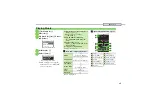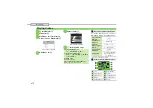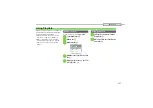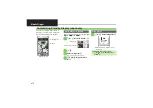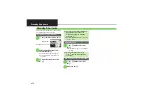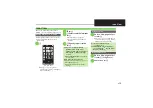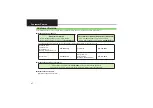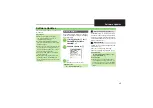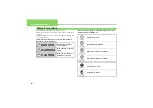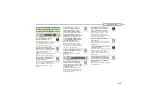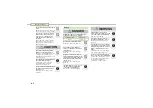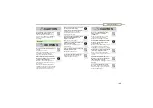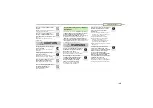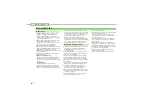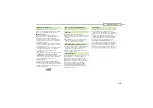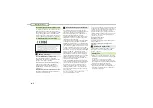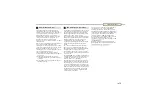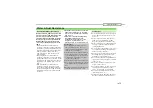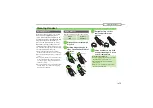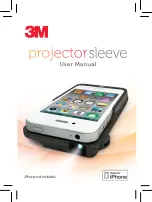
10-
6
Safety Precautions
This section is based on "
Guidelines on the Use
of Radio Communications E
q
uipment such as
Cellular Telephones and Safeguards for
Electronic Medical E
q
uipment
" (Electromagnetic
Compatibility Conference, April 1997) and
"
Guidelines to safeguard implanted medical
devices against radio emissions from the use of
radio e
q
uipment
" (Ministry of Internal Affairs and
Communications, January 2013).
Do not use Desktop Holder inside
vehicles.
Extreme temperature or vibration may
cause fire or malfunction.
$
Do not use Desktop Holder or
Charger in high humidity or near
water (in bathrooms, shower rooms,
etc.).
May cause fire, electric shock or
malfunction.
$
CAUTION
Grasp plug to disconnect Charger
before cleaning.
May cause electric shock or other
problems.
)
Always grasp plug (not cord) to
disconnect Charger.
Pulling plug by cord may damage cord
and cause electric shock, fire, etc.
(
Do not subject Charger to strong
impact while it is plugged in.
May cause malfunction or injury.
$
Do not touch charging terminals of
Desktop Holder while it is
connected to the outlet.
May cause burns.
$
Handset Use & Electronic Medical
E
q
uipment
WARNING
Persons with implanted pacemaker/
defibrillator should keep handset
more than 15 cm away.
Radio waves may interfere with
implanted pacemakers or defibrillators.
(
Before using electronic medical
e
q
uipment other than implanted
pacemaker/defibrillator outside
medical facilities, consult the
vendor on radio wave effects.
Radio waves may interfere with
electronic medical equipment.
(
Observe these rules inside medical
facilities to avoid effects of radio
waves on electronic medical
e
q
uipment:
.
Do not enter an operating room or
an Intensive or Coronary Care Unit
while carrying a handset.
.
Keep handset off in hospitals.
.
Even in lobbies or other places
where mobile phone use is
permitted, keep handset off near
electronic medical equipment.
.
Obey medical facility rules on mobile
phone use.
(
If it may not be possible to keep
handset 15 cm away from other
persons (e.g., in a crowded situation
where you cannot move freely),
suspend signal-transmitting
functions (e.g., by activating Offline
Mode) or power off beforehand.
Persons with implanted pacemaker/
defibrillator may be near.
Radio waves may interfere with
implanted pacemakers or defibrillators
causing such devices to malfunction.
(

